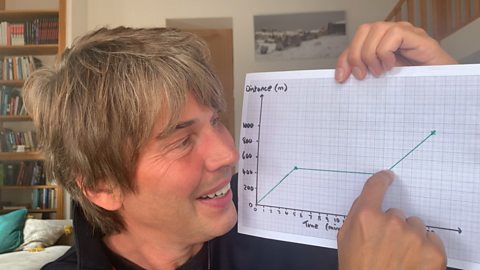Key Points
Multiple forces act on an object at the same time.
The size and direction of these forces determines the movement of the object.
Free body diagrams
Show the forces acting on an object in a free body diagram. The arrows represent the size and direction of the forces acting.
When drawing a force diagram:
- represent the object with a small box or dot
- draw the arrows with a pencil and ruler
- draw the arrows from the centre of the box or dot
- label the arrow with the name of the force and the size of the force
Examples of force diagrams include:
A book resting on a table
Skiing down a hill
A boat floating
Which direction will the force arrow representing the normal reaction force be pointing in a free body diagram?
The force arrow representing the normal reaction force will be pointing at right angles to the surface.
Resultant forces
Multiple forces act on an object at once and the Resultant ForceThe overall force acting on an object. that is acting on the object can be calculated. A resultant force is the overall force that acts on the object.

Remember that forces are vectors.
When you calculate the resultant force you need to also say the direction it is acting in. You can calculate this in two ways.
1. Forces acting in the same direction
In this diagram there are two forces, which, when added together give a resultant force of 30 newtons (N).
Resultant force = 20 N + 10 N
Resultant force = 30 N to the right
2. Forces acting in opposite directions
In this diagram there are two forces, acting in opposite directions:
Resultant force = 20 N – 10 N
Resultant force = 10 N to the left
Shortly after a ball is dropped, the air resistance is 5 N and the weight of the ball is 8 N.
Calculate the resultant force and say which direction it is acting.
The forces are acting in opposite directions, so resultant force is calculated by subtracting the smaller one from the larger one:
8 – 5 = 3 N, acting downwards.
The effect of forces

The movement of the object and the resultant force acting on it are linked.
Balanced forces
If the forces acting on the object are balanced there is no resultant force. This means the object could be travelling at a constant velocity. It could also be stationary or not moving at all.
Have a look at these examples.
- A car is travelling down a motorway. The thrust from the engine is 500 N and the air resistanceA force that acts on an object which is moving through air. Air resistance acts in the opposite direction to the direction of movement, so it acts to slow down the moving object. acting against the car is also 500 N.
Describe the motion of the car.
Resultant force = 500 N - 500 N
Resultant force = 0 N
There is no resultant force and the car is travelling on a motorway, this means that the car is travelling at a constant velocity.
- A box is placed on a table. The weight of the force on the box acting downwards is 100 N. The table applies a 100 N normal reaction forceWhen an object is at rest on a surface it experiences a supportive force that acts against the weight of the object. This force acts at a right angle to the surface. on the box upwards.
Describe the movement of the box.
Resultant force = 100 N – 100 N
Resultant force = 0 N
There is no resultant force acting on the box and the box is at restWhen an object is at rest it is not moving. on the table, meaning that the box is stationary.
Unbalanced Forces
If the forces acting on the object are not balanced then there is a resultant force acting on the object this means that the object is either accelerating or decelerating.
Have a look at these examples.
- A rocket has just launched. The thrust from the engine is 50 000 N and the WeightThis is the force that acts on an object that is within a gravitational field. of the rocket is 10 000 N.
Describe the motion of the rocket.
Resultant force = 50 000 N – 10 000 NResultant force = 40 000 N upwards
The rocket has just launched. The resultant force is acting upwards, which in the same direction as the rocket is moving, which means the rocket is accelerating upwards.
- A sky diver has just opened her parachute. The weight of the sky diver is 500 N and the air resistance acting on her is 700 N
Resultant force = 700 N – 500 NResultant force = 200 N upwards
The parachutist is travelling downwards, the resultant force is acting against the movement. This means that the parachutist is decelerating.
As a racing car approaches the finish line of a race, the thrust from the engine is 1500 N and the air resistance is 1000 N.
Calculate the resultant force (including its direction) and describe the motion of the car.
The resultant force is 1500 – 1000 = 500 N and it is acting in the same direction as the car is moving (forwards).
The car is, therefore, accelerating towards the finish line.
Test your knowledge
Quiz - Multiple choice
Teaching resources
Looking for something new to help your students get to grips with physics? In this short series of explainer films, Professor Brian Cox addresses popular misconceptions and talks viewers through the laws of forces, speed and motion.
91»»±¨ Teach has thousands of free, curriculum-linked resources to help deliver lessons - all arranged by subject and age group.
Play the Atomic Labs game! gamePlay the Atomic Labs game!
Try out practical experiments in this KS3 science game.

More on Forces and movement
Find out more by working through a topic
- count4 of 16

- count5 of 16

- count6 of 16

- count7 of 16
